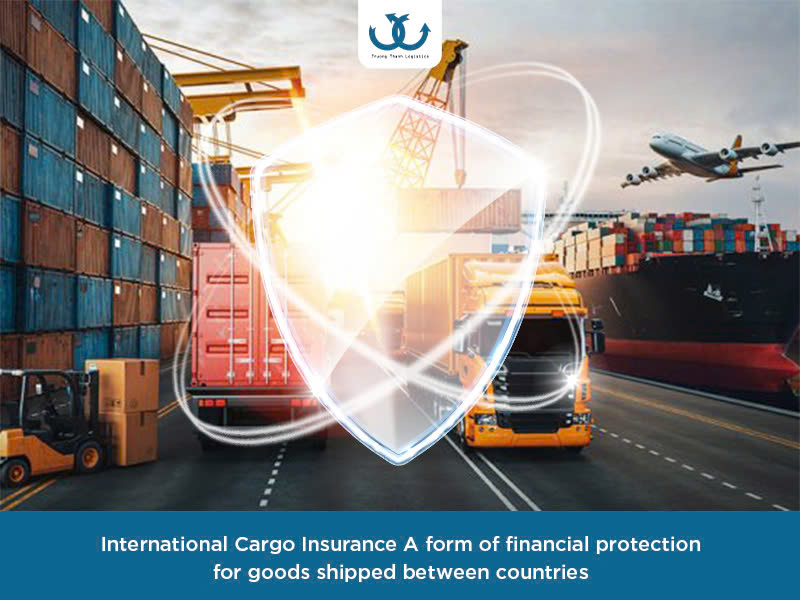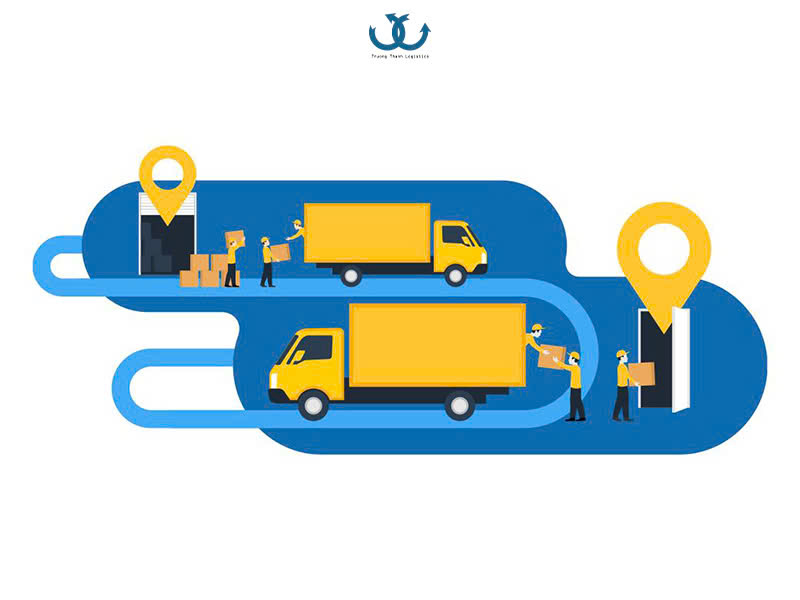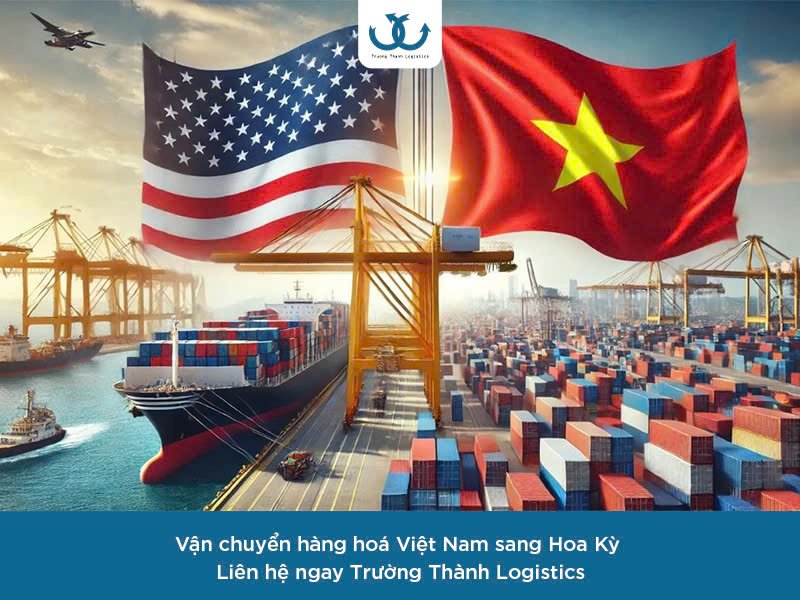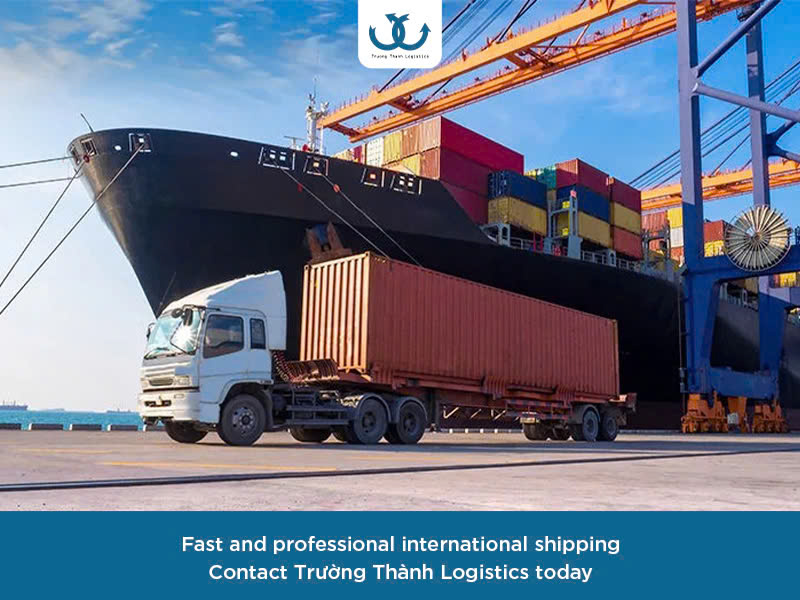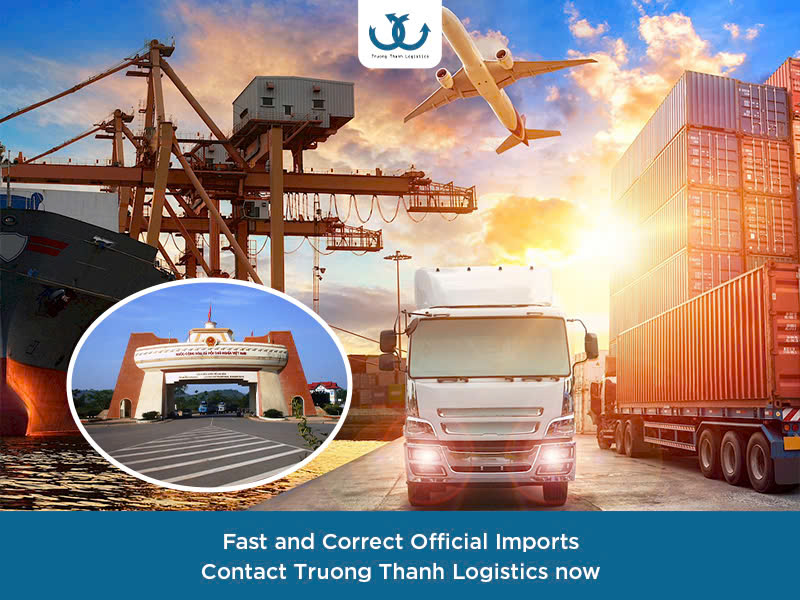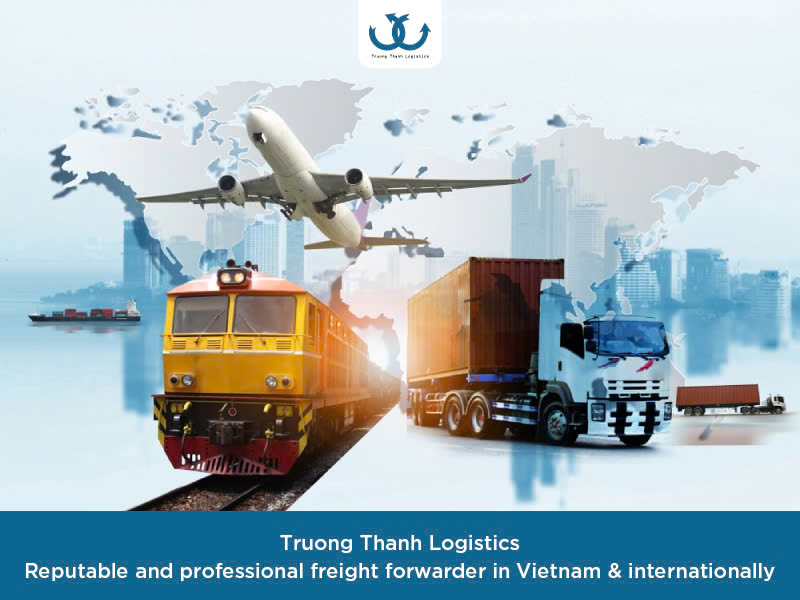Shipping goods via refrigerated containers (reefer containers) is one of the essential solutions to preserve the quality of agricultural products, food, seafood, and pharmaceuticals during the long journey from Vietnam to European countries.
However, this is also one of the most complex types of transport — requiring exporters to thoroughly understand technical procedures, storage standards, and the strict regulations of the EU market.
In this article, Trường Thành Logistics shares the most important factors to ensure that your reefer container shipment to Europe is safe, compliant, and cost-effective.
1. Characteristics of Reefer Container Transportation to Europe
Reefer transport uses containers equipped with automatic cooling systems, capable of maintaining stable temperatures ranging from -25°C to +25°C throughout the journey.
For European routes, the transit time typically ranges from 25 to 40 days, depending on the destination port (e.g., Rotterdam, Hamburg, Antwerp, Le Havre, etc.) and transport mode (sea or multimodal).
Because of the long distance and varying climate conditions, temperature, humidity, and ventilation control inside the container are critical factors determining the product’s quality upon arrival.
2. Types of Goods Commonly Shipped in Reefer Containers
Reefer containers are designed to maintain stable temperature and humidity levels, and to ensure proper air circulation inside — preserving temperature-sensitive goods throughout long-distance transport.
Especially when exporting to Europe — a market with strict food safety and quality standards — using reefer containers is mandatory for many product categories.
Common categories shipped to Europe include:
a. Fresh produce and fruits
These make up a significant portion of Vietnam’s cold export volume to Europe — including mango, dragon fruit, coconut, passion fruit, pomelo, banana, jackfruit, durian, pineapple, and rambutan.
- Characteristics: Easily spoiled, dehydrated, or ripened prematurely if temperatures fluctuate.
- Storage requirement: Maintain between +5°C and +13°C, depending on the product.
- Notes:
- Pre-cool fruits before loading.
- Ensure continuous ventilation to limit ethylene gas buildup (which accelerates ripening).
- Use ventilated cartons or trays and avoid stacking goods tightly against the container walls.
b. Frozen seafood
Includes shrimp, pangasius, squid, octopus, crab, surimi, etc., widely exported to the Netherlands, Germany, Belgium, and France.
- Characteristics: Highly temperature-sensitive and prone to spoilage above the freezing threshold.
- Storage requirement: Maintain at -18°C or below throughout the journey.
- Notes:
- Goods must be fully frozen before loading.
- Do not exceed the airflow red line in the container.
- Check cooling system tightness and stability before departure.
c. Processed foods and dairy products
Includes processed meat, sausages, cheese, butter, milk, yogurt, chilled desserts, and ready-to-eat refrigerated food.
- Characteristics: Sensitive to temperature and microorganisms, easily developing off-flavors if stored incorrectly.
- Storage requirement:
- +2°C to +8°C for chilled products.
- -10°C to -20°C for frozen products.
- Notes:
- Packaging must be moisture-proof, tear-resistant, and suitable for low temperatures.
- Containers must be thoroughly cleaned and disinfected before loading.
d. Pharmaceuticals and medical products
This high-value category requires strict temperature control, including vaccines, biologicals, infusions, and raw pharmaceutical materials.
- Storage requirement:
- +2°C to +8°C for most drugs.
- Below 0°C for specific biologics.
- Notes:
- Containers should be equipped with temperature monitoring and alarm systems.
- Must comply with GDP (Good Distribution Practice) standards.
- Temperature data must be logged for verification during EU customs clearance.
e. Fresh flowers, ornamental plants, and specialty agricultural products
Europe is a major consumer of fresh-cut flowers and ornamental plants from Asia.
- Storage requirement: +1°C to +5°C, with 90–95% humidity.
- Notes:
- Use containers with controlled atmosphere (CA) features.
- Avoid shocks and vibrations that can damage delicate stems.
- Transit times should be precisely calculated to minimize delays.
- Temperature-sensitive industrial materials
Includes chemicals, medical plastics, adhesive films, and electronic components requiring temperature stability.
- Storage requirement: +15°C to +25°C, avoiding sudden changes.
- Notes:
- Do not load with food or odor-sensitive goods.
- Containers must be perfectly clean and sealed.
3. Key Considerations When Shipping Reefer Containers to Europe
a. Temperature and storage control
Before loading:
- Define the ideal temperature range (e.g., -18°C for seafood, +2°C for fresh fruit).
- Set proper humidity and ventilation levels.
- Run the refrigeration system for at least 30 minutes before loading.
Even a 1–2°C deviation over time can cause spoilage, especially for perishable items like fruit or dairy.
b. Proper packaging standards
Use insulated, moisture-resistant materials like PE-coated cartons, thick plastic liners, or ventilated foam trays.
Leave at least 10 cm of space from container walls for airflow circulation.
c. Choosing the right carrier and route
European shipments often transit through Singapore, Colombo, or Algeciras. Choose carriers offering stable schedules and real-time temperature monitoring (RCM – Remote Container Management) systems.
Reputable lines include Maersk, MSC, CMA CGM, ONE, and Hapag-Lloyd.
d. Documentation and customs compliance
The EU enforces strict inspection on cold-chain imports, especially for food and agricultural goods. Exporters must prepare:
- Phytosanitary or veterinary certificates
- Certificate of Origin (C/O)
- Health Certificate
- Customs declaration, contract, invoice, and packing list
- Any errors may result in goods being detained, inspected, or destroyed — causing major losses.
e. Real-time monitoring of reefer containers
During transport, continuously monitor temperature data, alarms, and power supply. Many carriers now provide 24/7 reefer tracking systems to help shippers manage risk proactively.
4. Common Risks in Reefer Container Transport to Europe
Shipping refrigerated goods over thousands of nautical miles from Vietnam to Europe is a highly complex logistics operation.
Even minor technical issues can cause significant losses in quality, cost, and reputation.
Common risks include:
- Power loss during loading, unloading, or transshipment.
- Incorrect initial temperature setting.
- Extended transit time due to port congestion or schedule changes.
- Missing or invalid quarantine certificates leading to rejected or destroyed cargo.
To mitigate these risks, exporters should purchase international cargo insurance and work with experienced logistics partners specializing in reefer shipments to the EU.
5. Trường Thành Logistics – Safe & Efficient Reefer Container Solutions to Europe
In reefer transport to Europe, safety, temperature accuracy, and timeliness are the keys to maintaining product quality and protecting brand reputation.
With extensive experience in international logistics, Trường Thành Logistics provides comprehensive, cost-optimized reefer container services.
End-to-end cold-chain service – from warehouse to port
We handle every stage: pickup, loading supervision, temperature monitoring, customs declaration, and port delivery. Every process is strictly controlled to ensure proper temperature maintenance — especially for fresh food, seafood, fruit, pharmaceuticals, and flowers.
Extensive international carrier network
We partner with major shipping lines and airlines with stable European routes to key ports like Rotterdam, Hamburg, Antwerp, and Felixstowe — minimizing delays and transshipments while optimizing costs.
Real-time temperature & GPS tracking
Our reefer containers are equipped with temperature and GPS monitoring, allowing clients to check the location and condition of their cargo anytime.
In case of irregularities (e.g., gas leaks or temperature deviation), our technical team provides immediate response and resolution.
Professional customs & documentation support
We assist exporters with complete EU-compliant paperwork — including C/O, C/Q, health certificates, and inspection procedures — ensuring smooth, accurate customs clearance.
Consulting & cost optimization
Each product and route has unique requirements. Trường Thành Logistics offers tailored advice on optimal temperature ranges, container types, schedules, and carriers — helping clients reduce costs while ensuring quality.
With the motto “Safety – Accuracy – Efficiency”, Trường Thành Logistics is proud to be your trusted partner in international reefer container transport, especially on the Europe route.
We don’t just move your cargo — we protect your brand and export reputation.
Trường Thành Logistics – Professional & Dedicated
Hotline: +84 915 36 38 39
Head Office: 5th Floor, Tower A, Song Da Building, Pham Hung Street, Tu Liem Ward, Hanoi, Vietnam.
Email: sale@truongthanhjsc.com
info@truongthanhlogistics.com
Website: https://truongthanhlogistics.com
HAI PHONG BRANCH
Address: Room C103, TTC Building, 630 Le Thanh Tong Street, Hai An Ward, Hai Phong City, Vietnam.
DA NANG BRANCH
Address: 126 Chau Thi Vinh Te Street, Ngu Hanh Son Ward, Da Nang City, Vietnam.
HO CHI MINH CITY BRANCH
Address: Room 41, 4th Floor, Casanova Building, 85 Nguyen Son Street, Phu Thanh Ward, Ho Chi Minh City, Vietnam




